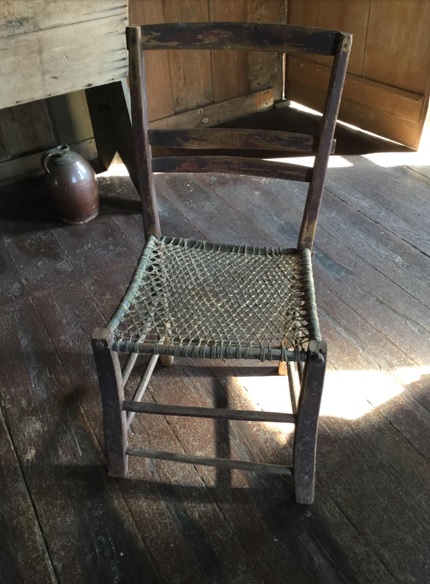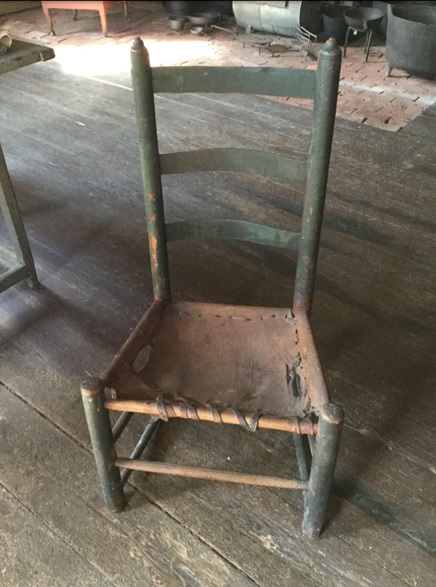Primitive Chairs on the Maine Frontier
Use it up.
Wear it out.
Make it do,
or do without.
The quote may have come from the 20th century Depression Era, but it was certainly true on the frontier is earlier years!
In the very beginning, on the frontier, there was virtually no furniture. It was far too difficult to move it through country with no roads. And, to start with, no dwelling to put it in. Stumps made fine stools, and taller ones could even be made to have backs.
But chairs as we know them required things like turning lathes to make attractive rungs and legs. But soon crude chairs were made. It wouldn’t be easy to make even a crude chair: getting the legs even, and braced with rungs is very hard. So, having made one it would be important to keep it going! They probably originally had woven rush seats and these dried out and shredded and had to be replaced.
These two small chairs in the kitchen at Pownalborough Court House are great examples of primitive chairs using material like rawhide thongs and tanned leather hide that was on hand and more durable than rush.


Hunting went on year-round, so hides and thongs would have bee available, durable, and free! Just the thing to keep these chairs in useable condition.
Perry Palmer, LCHA Collections Committee

 Newsletter
Newsletter Join LCHA
Join LCHA Donate Now
Donate Now